Biology > QUESTIONS & ANSWERS > BIOS 242 WEEK 8 FINAL EXAM- DEFINITIONS TO KNOW (All)
BIOS 242 WEEK 8 FINAL EXAM- DEFINITIONS TO KNOW
Document Content and Description Below
Final Exam Definitions to know: Immunology: Study of the body’s specific defenses against pathogens. Halophiles: salt lovers environment Spirochete: Group of helical, Gram-negative b... acteria with axial filaments that cause the organism to corkscrew, enabling it to burrow into a host’s tissues. Mutualism: Symbiotic relationship in which both members benefit from their interaction. Signs: Objective manifestations of disease observed or measured by others Symptoms: Subjective characteristics of disease felt only by the patient Nosocomial disease (healthcare associated disease): A disease acquired in a healthcare facility. Nosocomial infection (healthcare associated infection): An infection acquired in a healthcare facility. Sty: Inflamed bacterial infection of the base of an eyelid. Folliculitis Called a sty when it occurs at the eyelid base can spread to surrounding tissues producing furuncles, carbuncles in groups Lymphangitis: Condition in which inflamed lymphatic vessels become visible as red streaks under the skin. Candidiasis: Term for several opportunistic diseases caused by infection with Candida species. Pathogen: A microorganism capable of causing disease. Zoonoses: Diseases that are naturally spread from their usual animal host to humans. Fomites: Objects inadvertently used to transfer pathogens to new hosts, such as a glass or towel. Infections: Successful invasion of the body by a pathogenic microorganism. Lipid A: The lipid component of lipopolysaccharide, which is released from dead Gramnegative bacterial cells and can trigger shock and other symptoms in human hosts. Septicemia: any microbial infection of the blood that produces illness Bacteremia: bacterial septicemia Toxemia: release of bacterial toxins into the blood Common cold viruses are frequently spread by contaminated fomites (ways to transfer pathogens) Blastomycosis- transmitted to human via bird Superoxide dismutase peroxide anion, eliminate superoxide radicals Superoxide dismutase – eliminate superoxide radicals Catalase and peroxidase – removal of hydrogen peroxide Types of healthcare associated infections (HAIs) Exogenous - Pathogen acquired from the health care environment Endogenous - Pathogen arises from normal microbiota as a result of factors within the healthcare setting Iatrogenic - Results from modern medical procedures Superinfections - Use of antimicrobial drugs reduces competition from some resident microbiota, allowing other microbes to thrive Know the characteristics of prokaryotic cells – i.e. no nucleus 1. they have no nuclear membrane 2. their DNA is not wound around histones 3. the cell walls are made of a chemical called peptidoglycan 4. they do not have complex membrane-bound organelles What does prokaryotic mean? Any unicellular microorganism that lacks a nucleus. Classification includes bacteria and archaea. Know how we measure bacterial cells. The standard method is the plate count, which is the usual way to count microbes. The purpose of this method is to just use a sample of dilutions on a bacterial culture and counting. First, 3 of the 0.1ml dilutions are poured to duplicate the agar plates. One then sterilizes the glass spreader by dipping it in alcohol and burning it. Once the spreader is cooled, 0.1 of the inoculum is spread over the agar plates till the media doesn’t look wet. Repeat the process for the remaining plates. Once all that is done, it must be incubated at room temperature. It can then be counted in the end, all of the colonies. The advantage of this method is that it is super easy to do and one counts CFUs if they aren’t broken up. It isn’t complicated to pull through this method. As for the disadvantage, the count might not be as accurate. Not only this, the time to complete this method with all the dilutions, plating, smearing, and incubation waiting take a bit of time. The turbidimetric method is a much more complicated process. This process deals with the bacteria growing in a culture, creating a cloud. The cloud is thus counted and it can be converted to cell numbers. The first step is to take the broth, wipe the outside of the cuvette, and insert it into the sample holder in the spectrophotometer. One must discard the broth and use the same cuvette to measure the diluted sample in density. The next day, one counts the number of colonies on each plate. This is the turbidimetric method. An advantage to this method is that it is way faster compared to the other method. As for the disadvantage, it can’t be used for microbes that are grouped together. Lower densities can’t be measured as well with this method. Know the consti [Show More]
Last updated: 1 year ago
Preview 1 out of 11 pages
.png)
Reviews( 0 )
Document information
Connected school, study & course
About the document
Uploaded On
Aug 03, 2022
Number of pages
11
Written in
Additional information
This document has been written for:
Uploaded
Aug 03, 2022
Downloads
0
Views
78


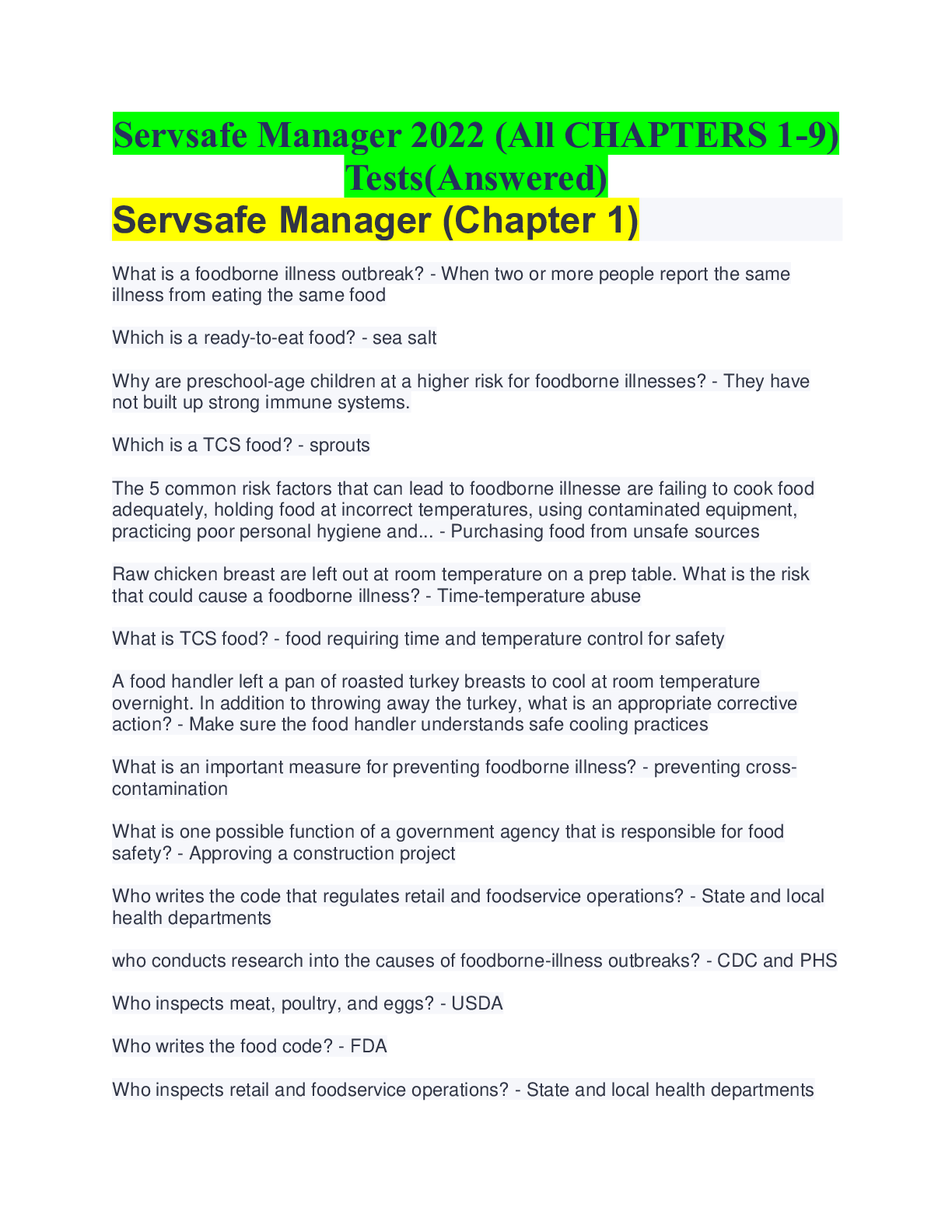
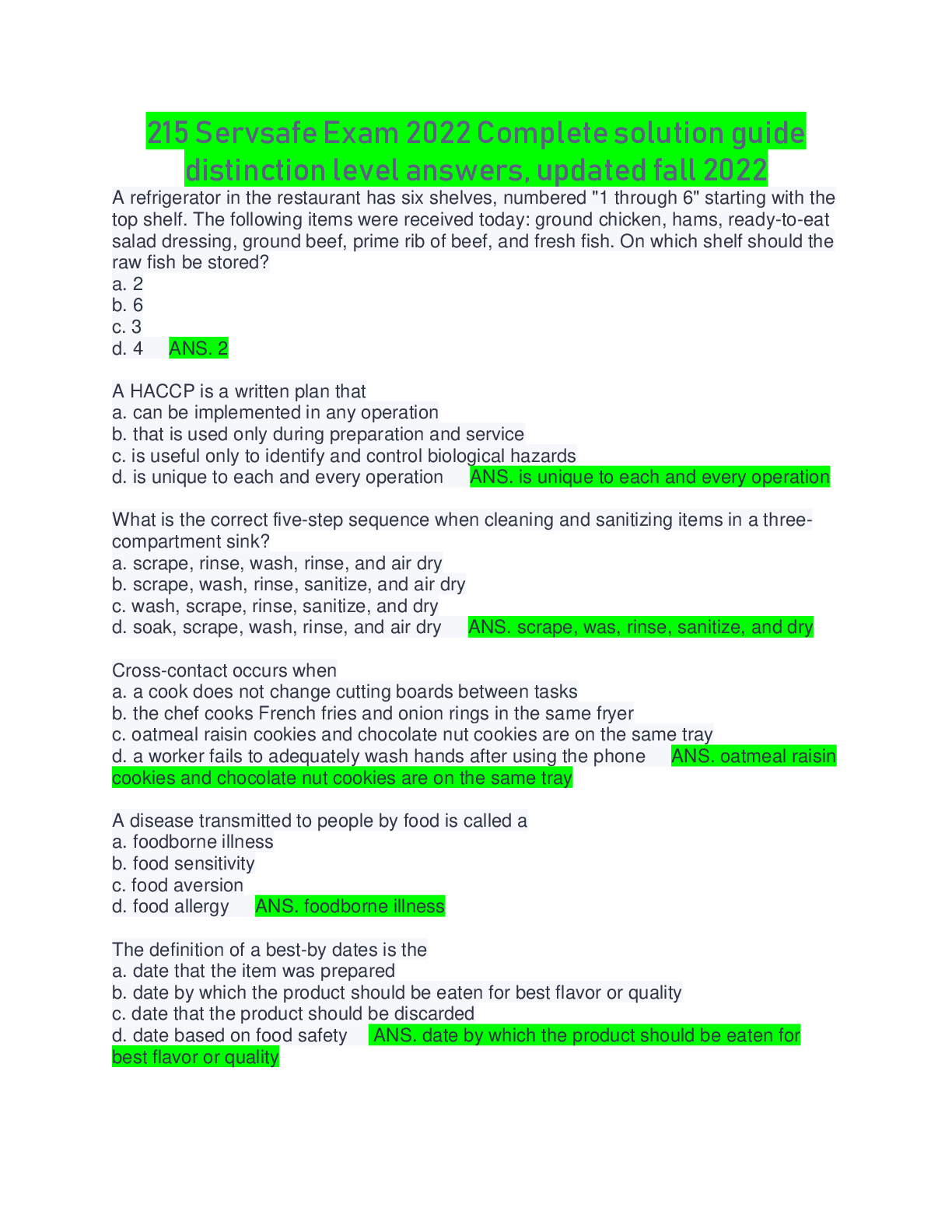
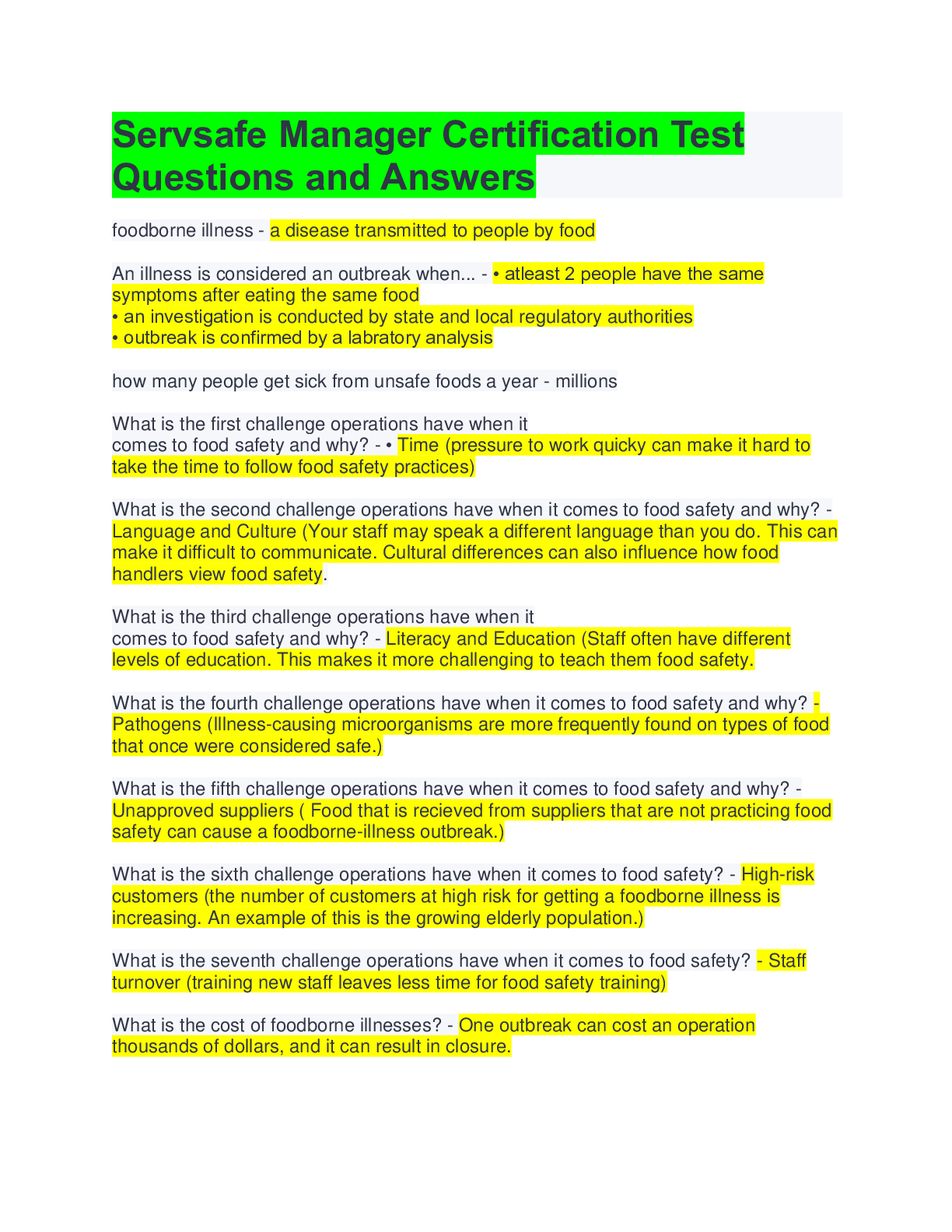
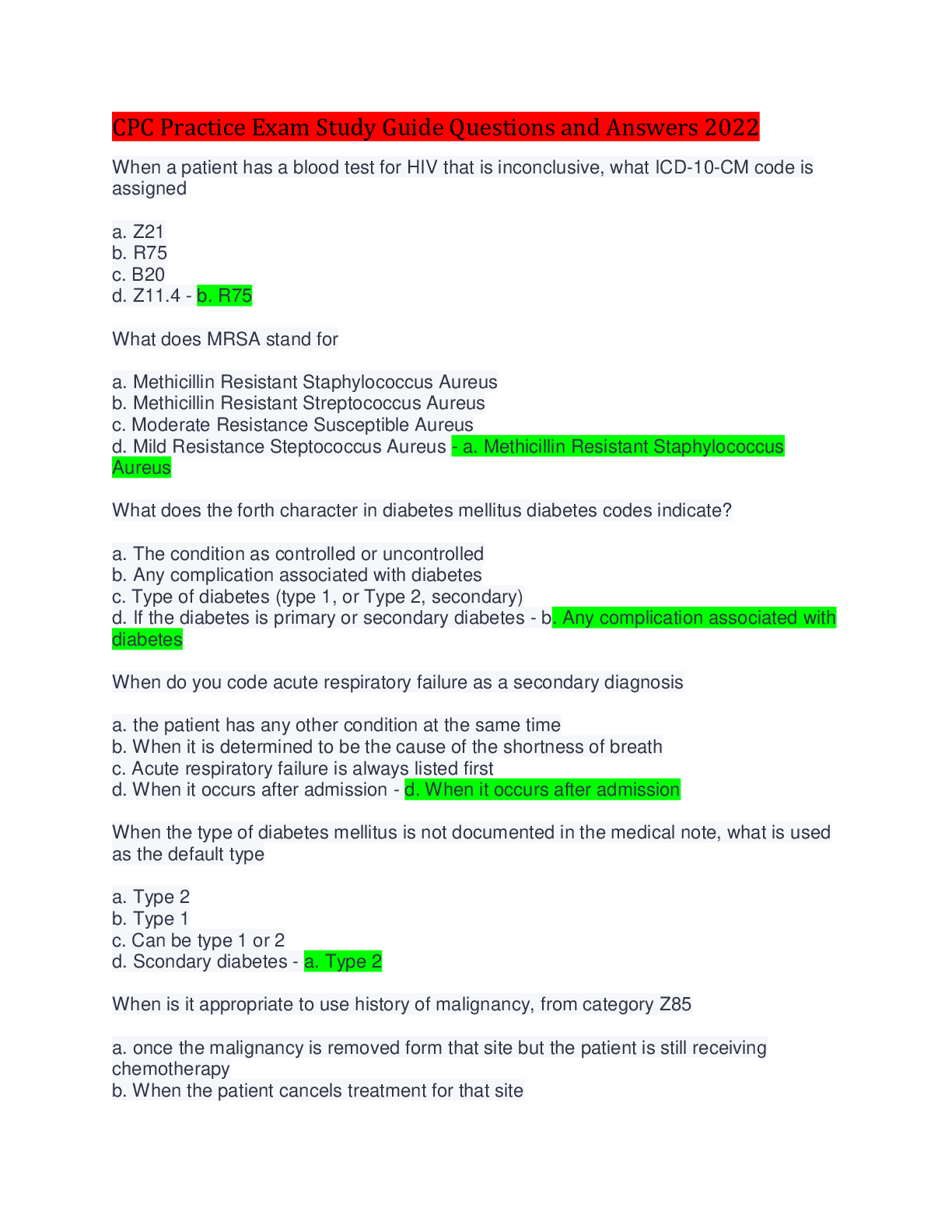
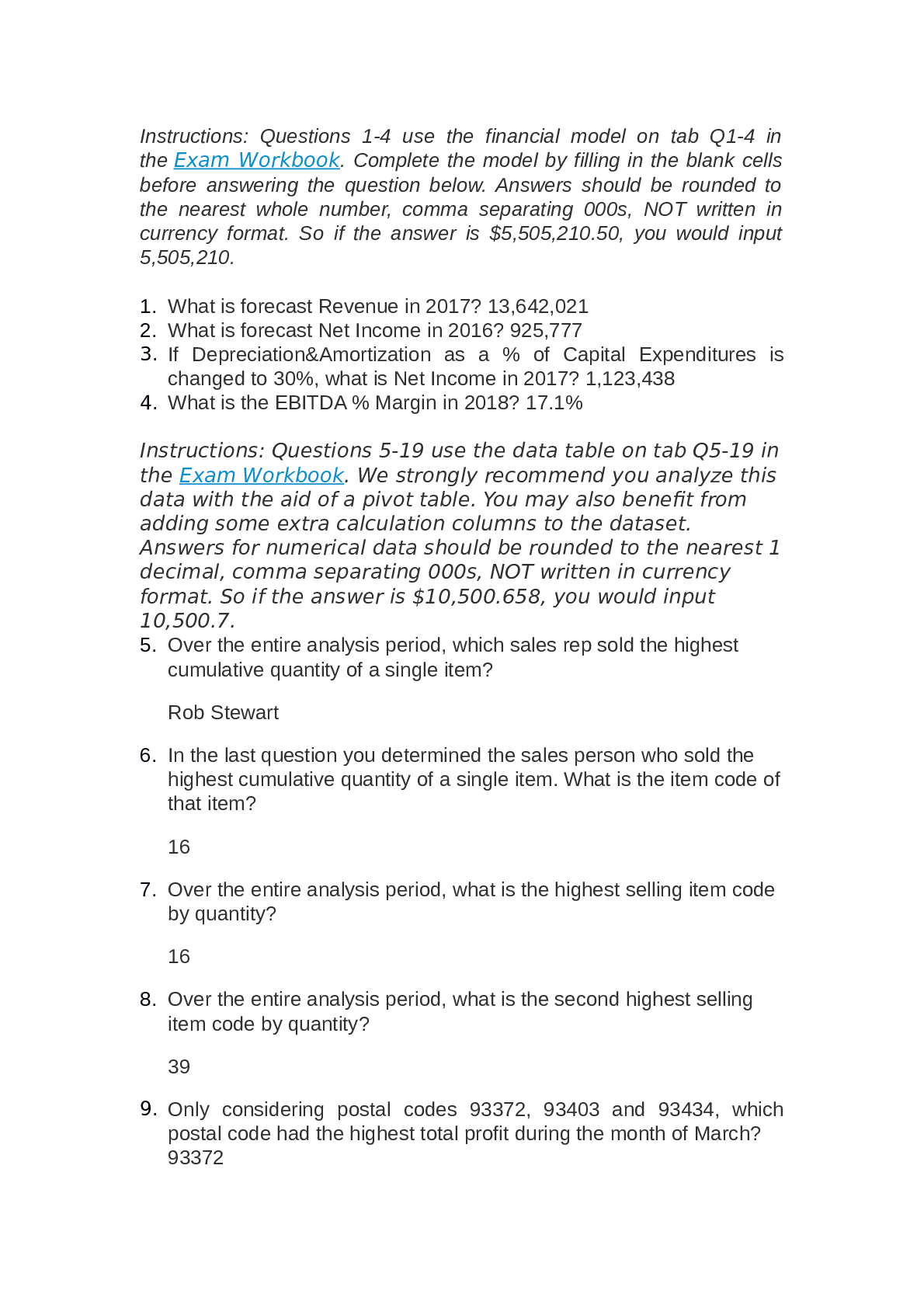
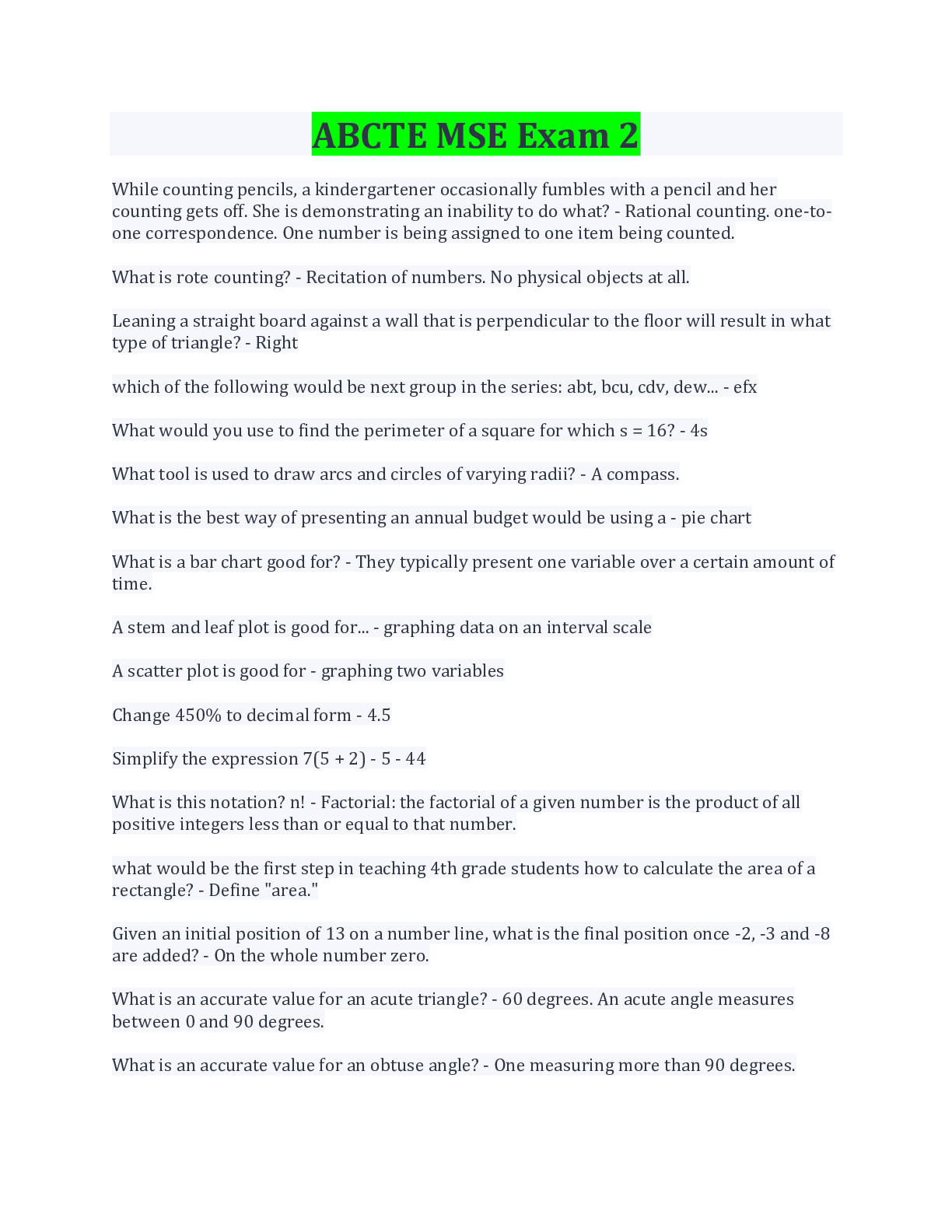
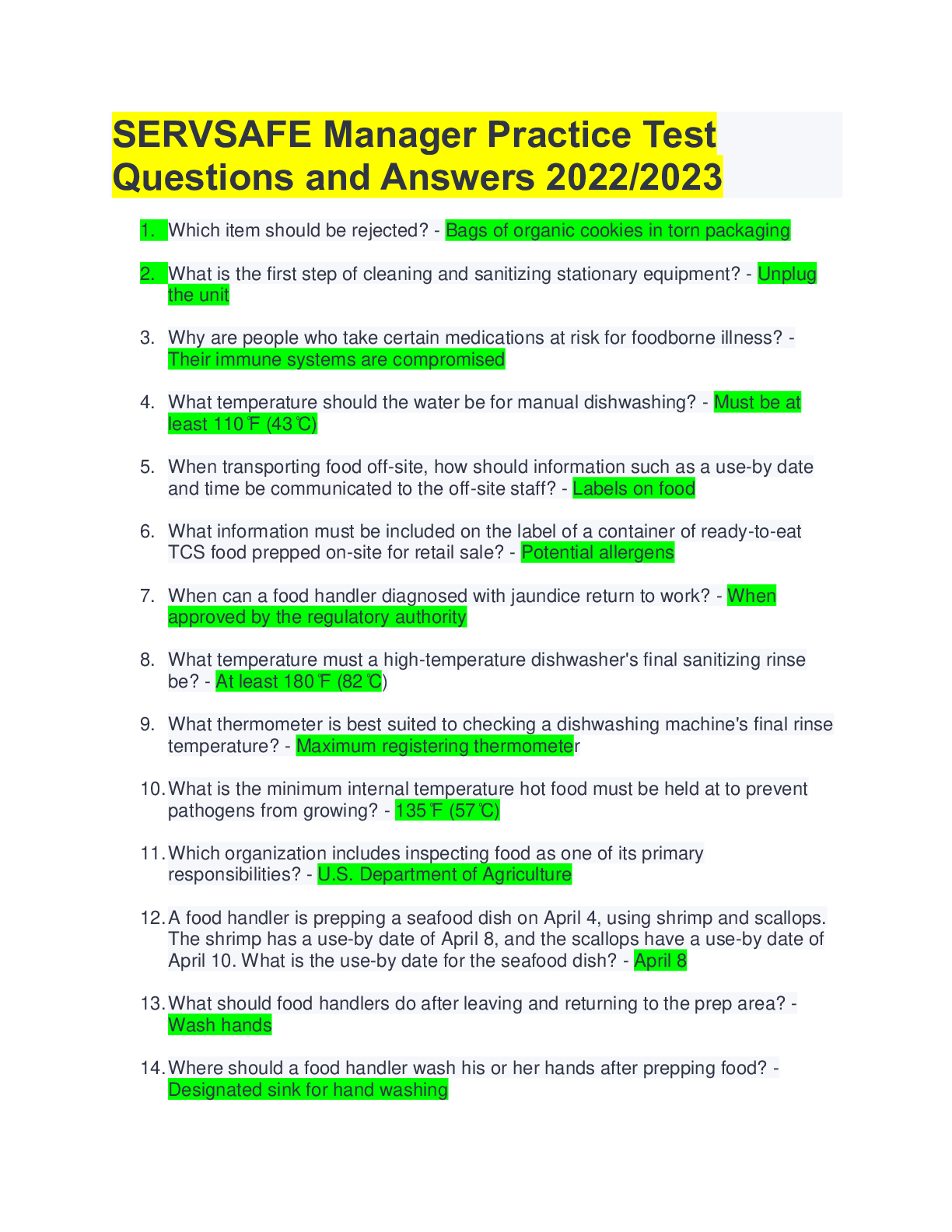

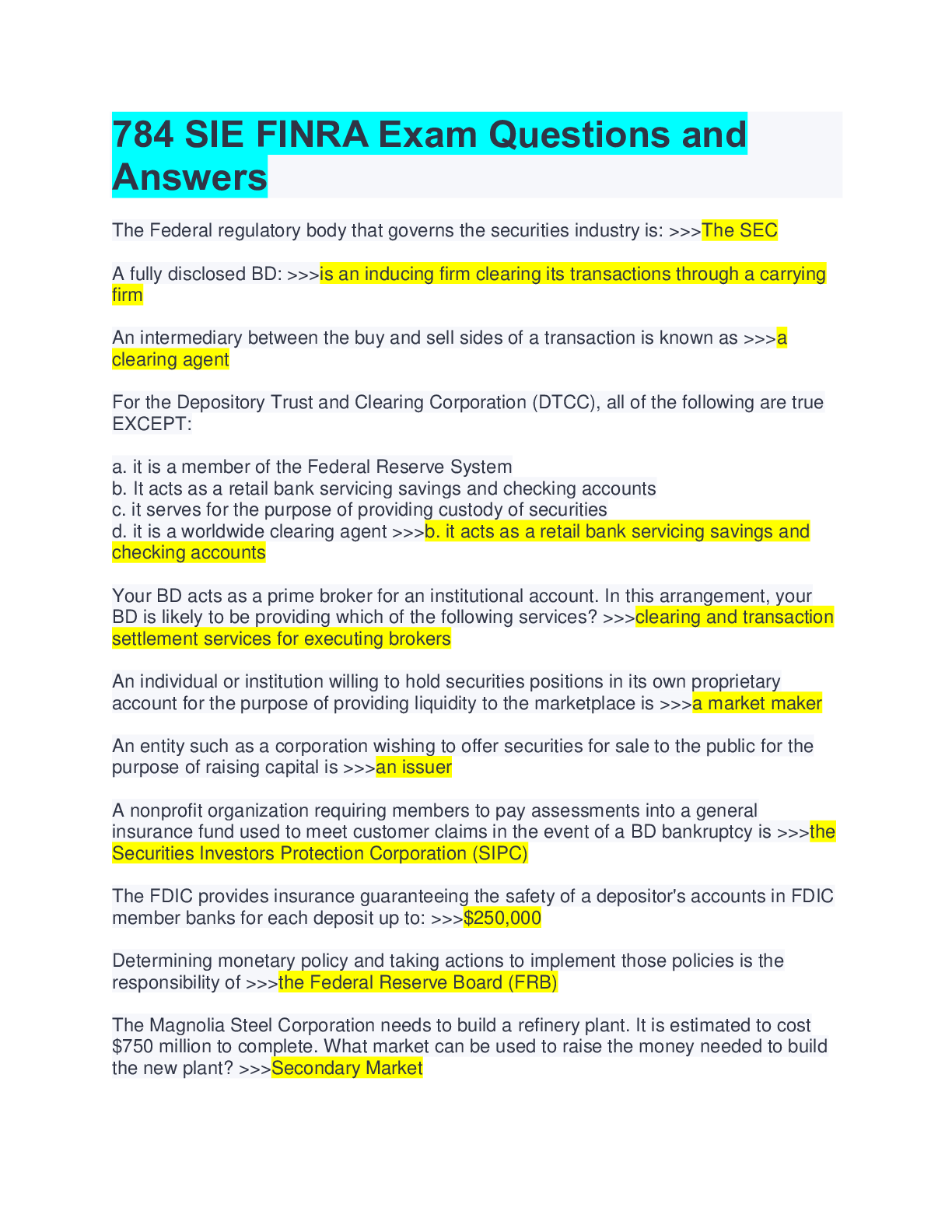
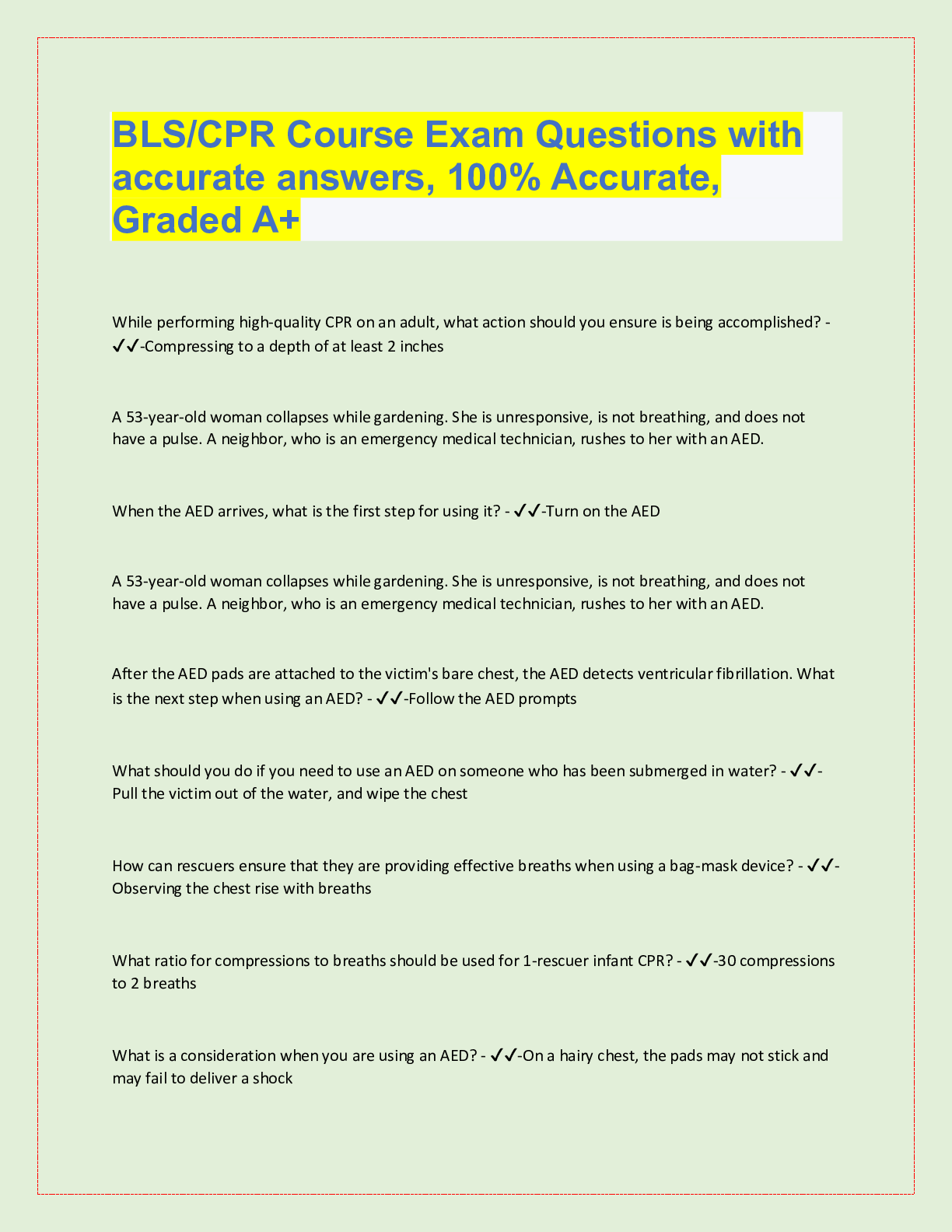
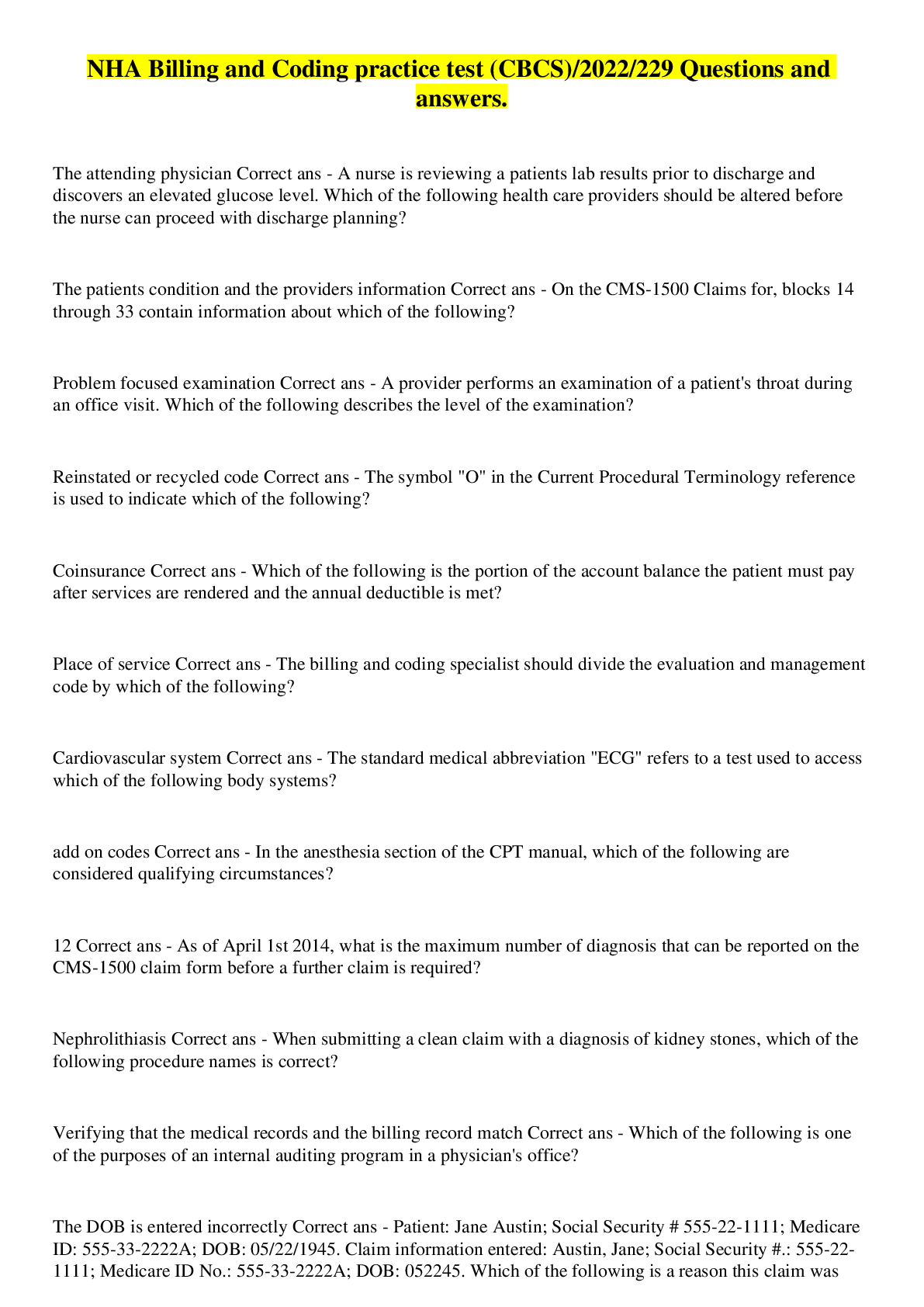
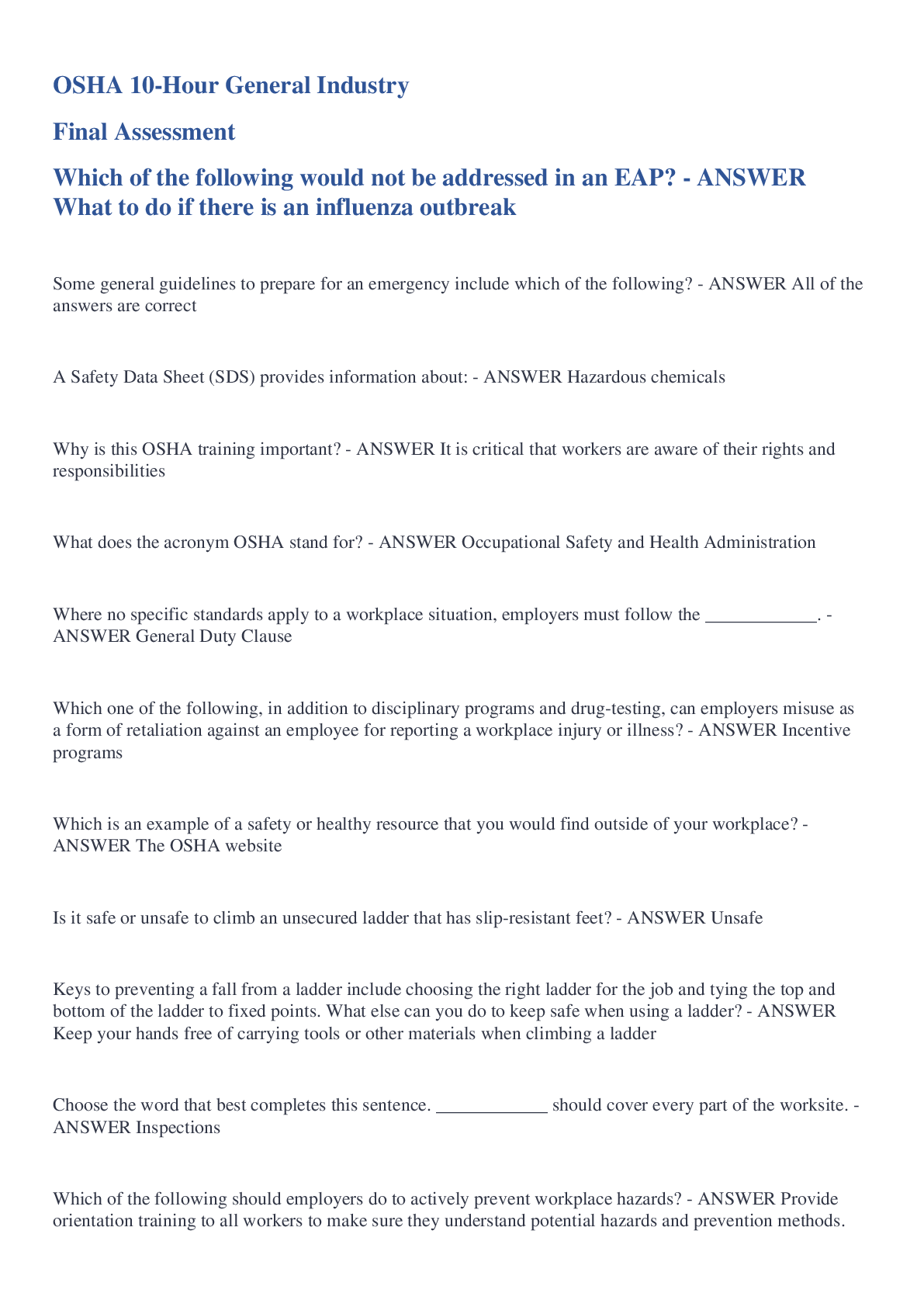

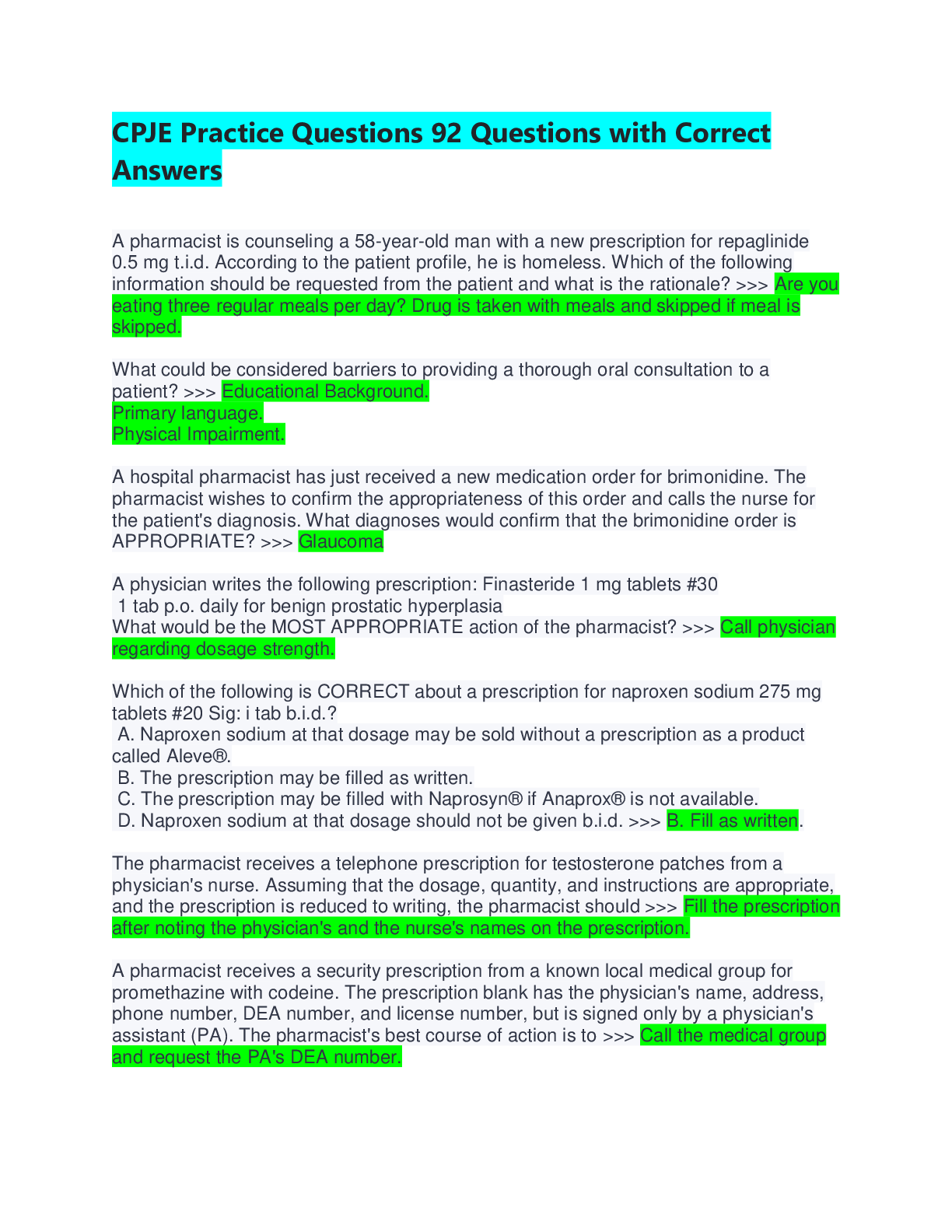
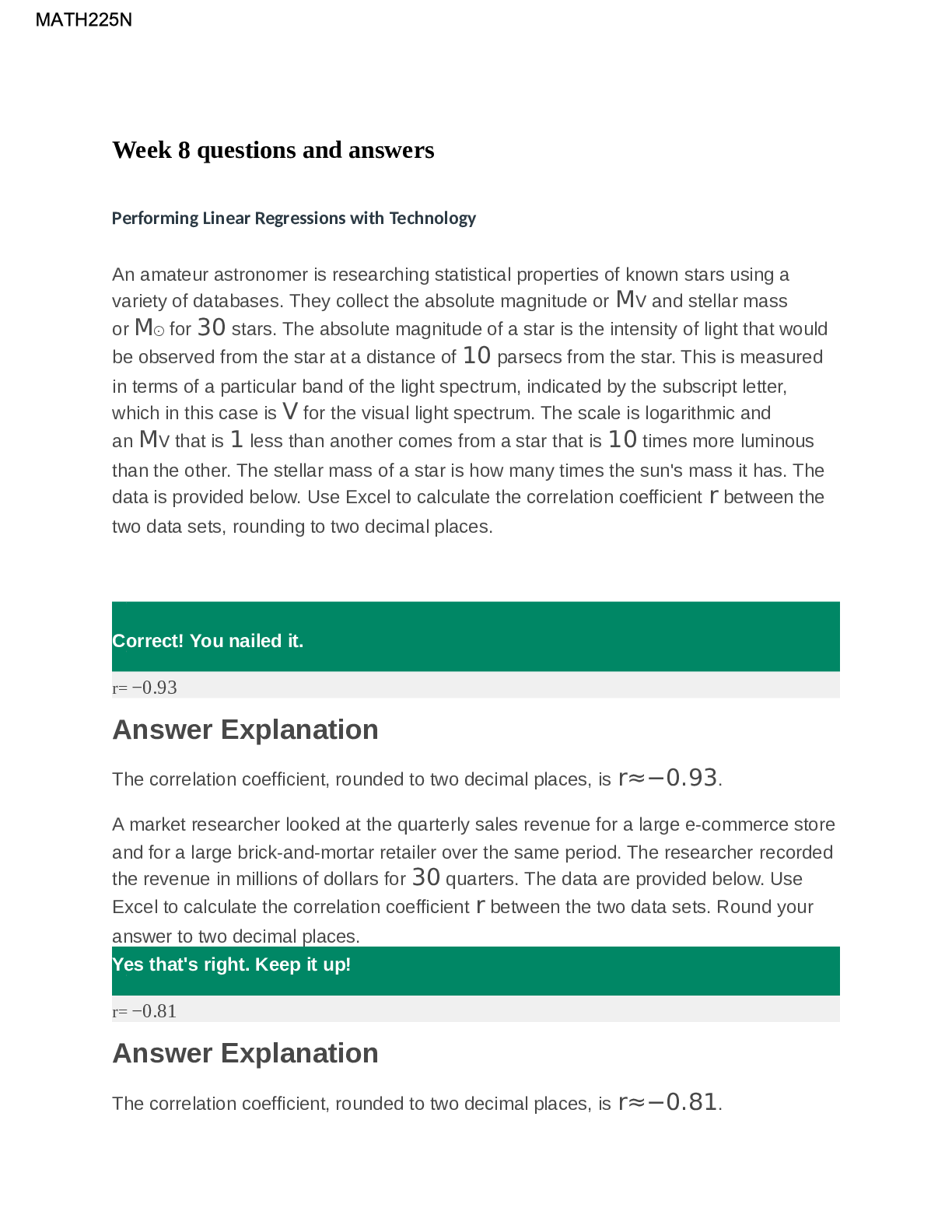
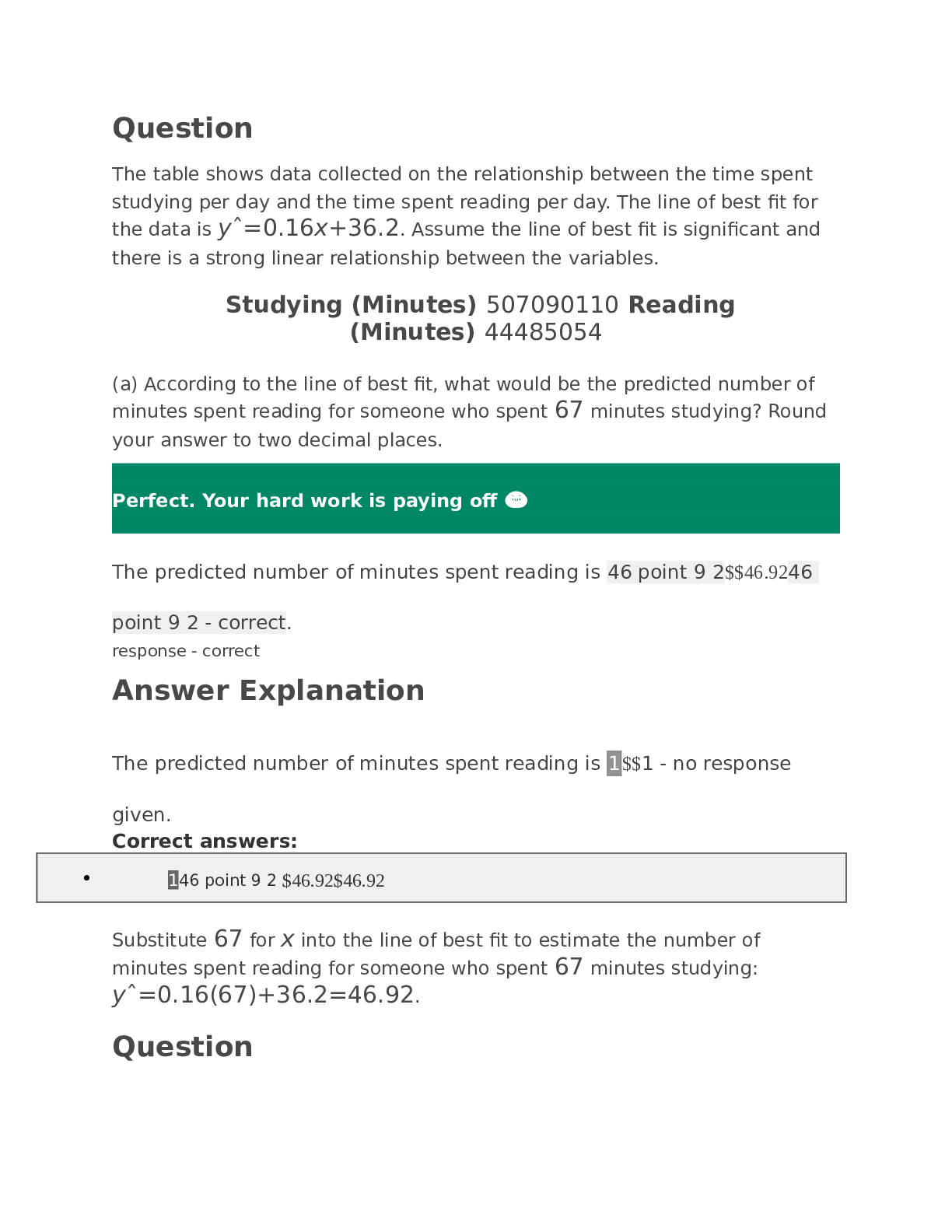

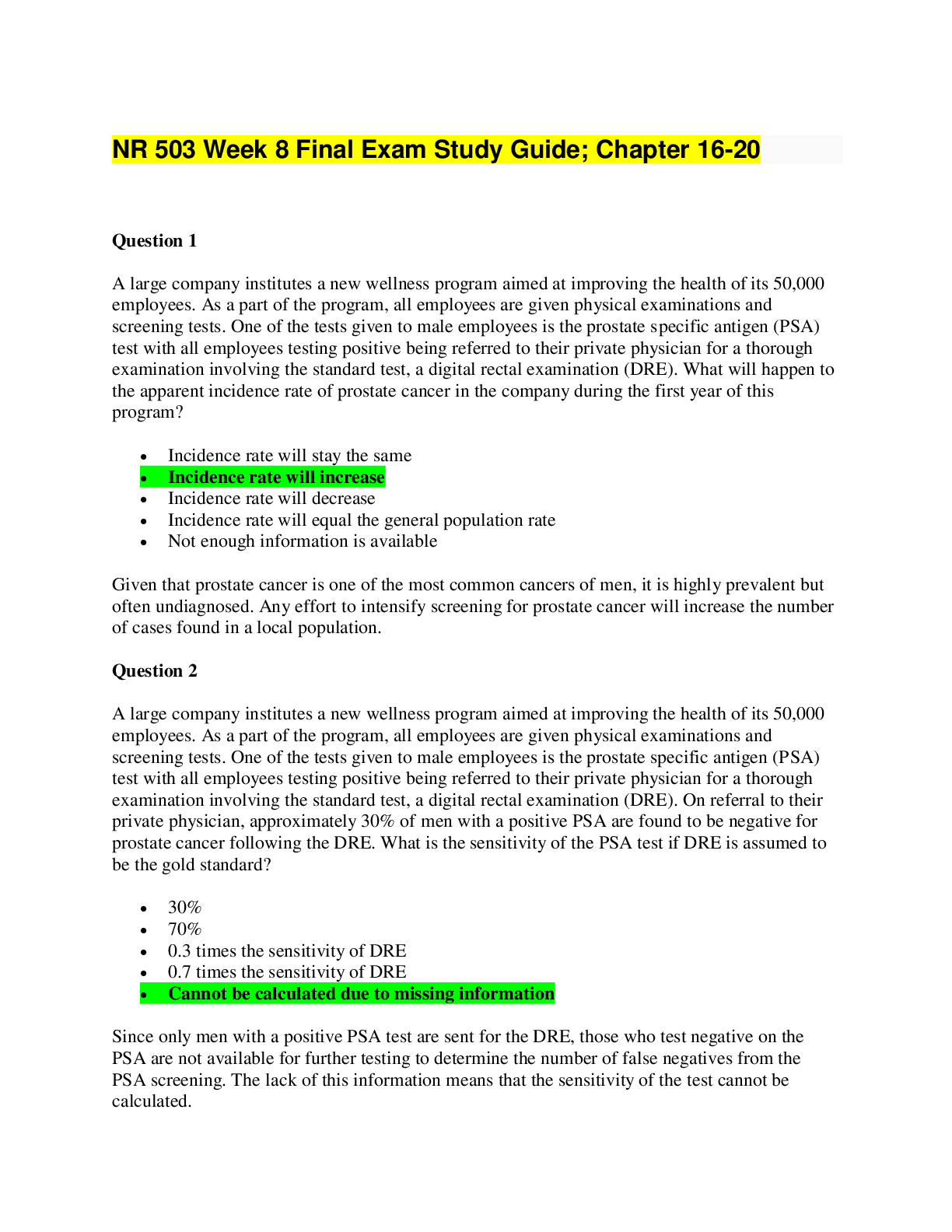
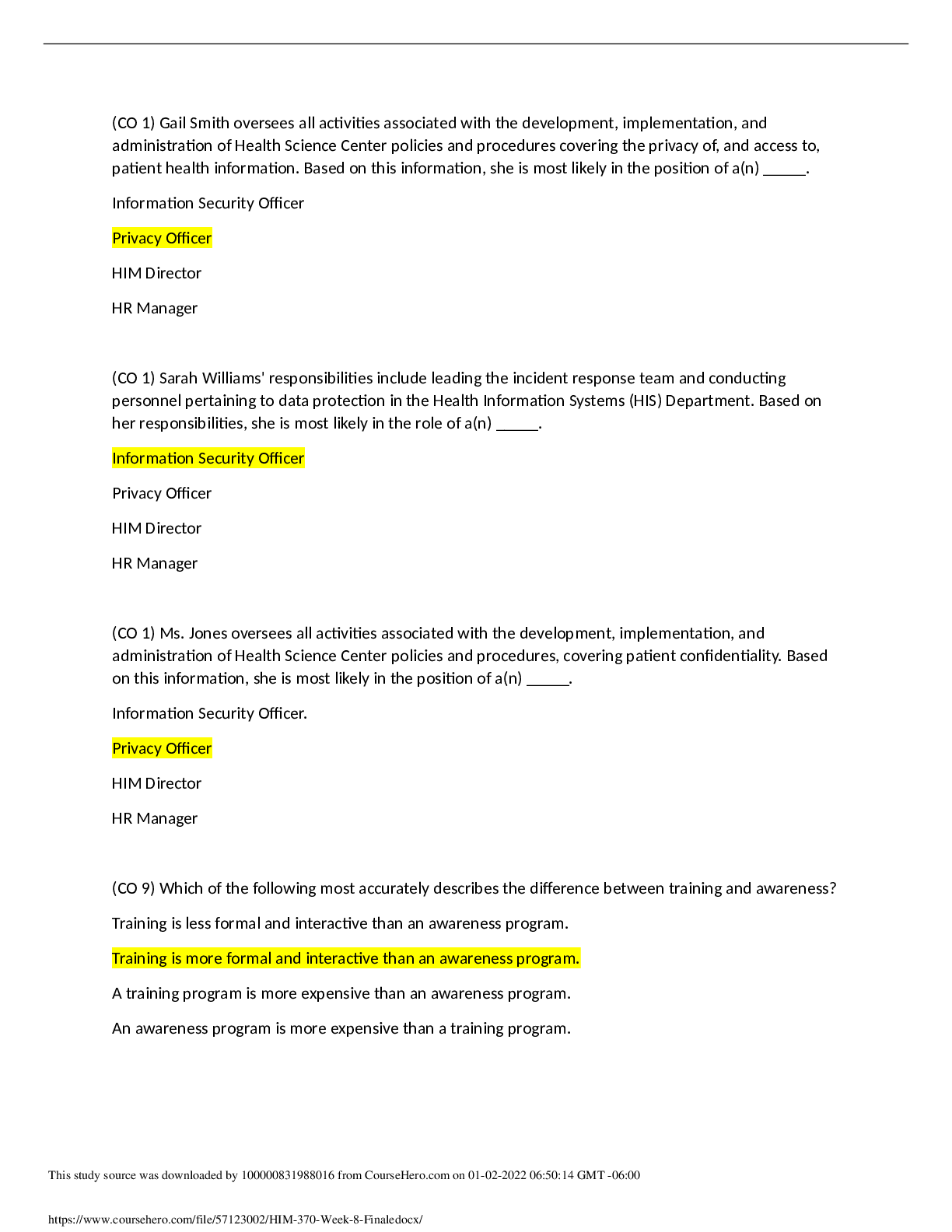
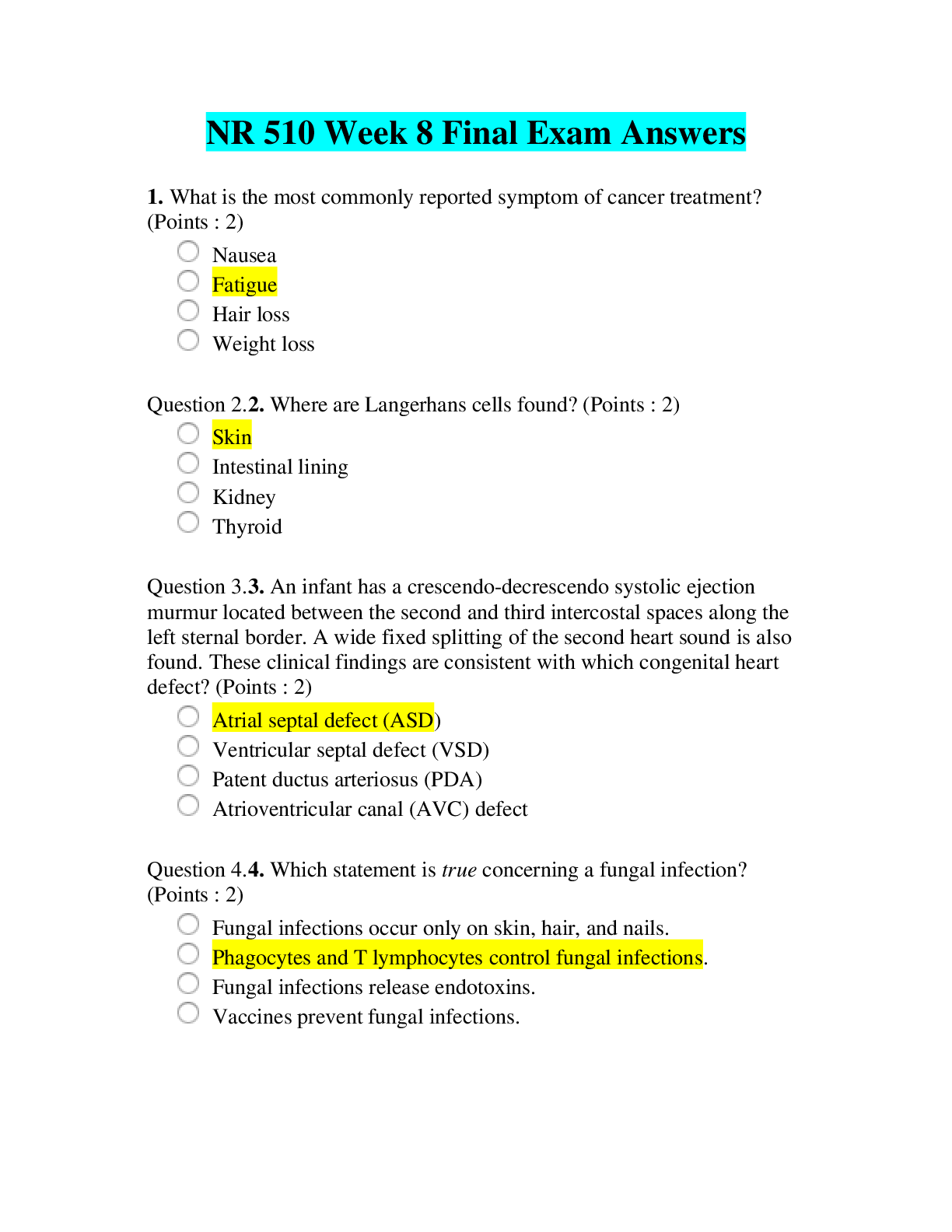
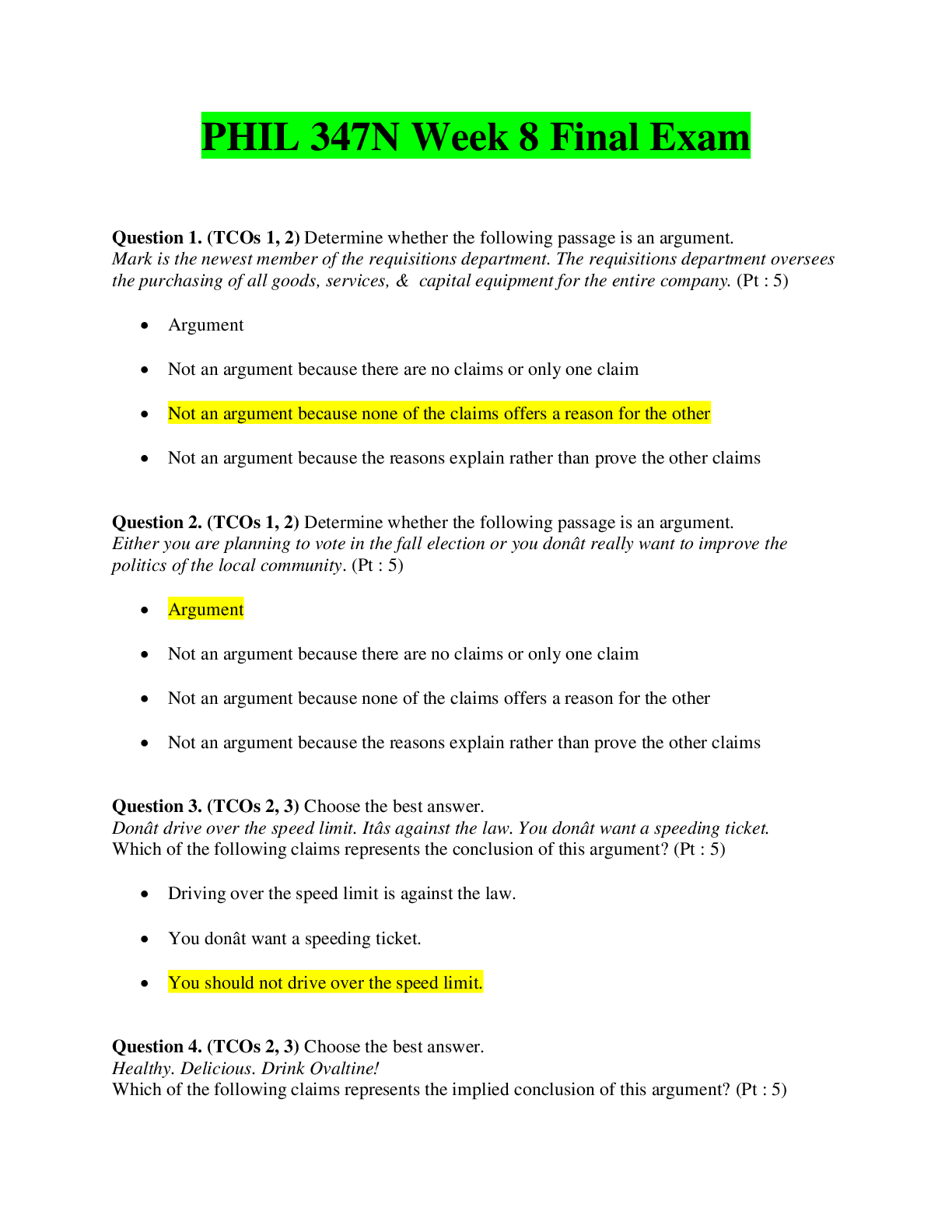
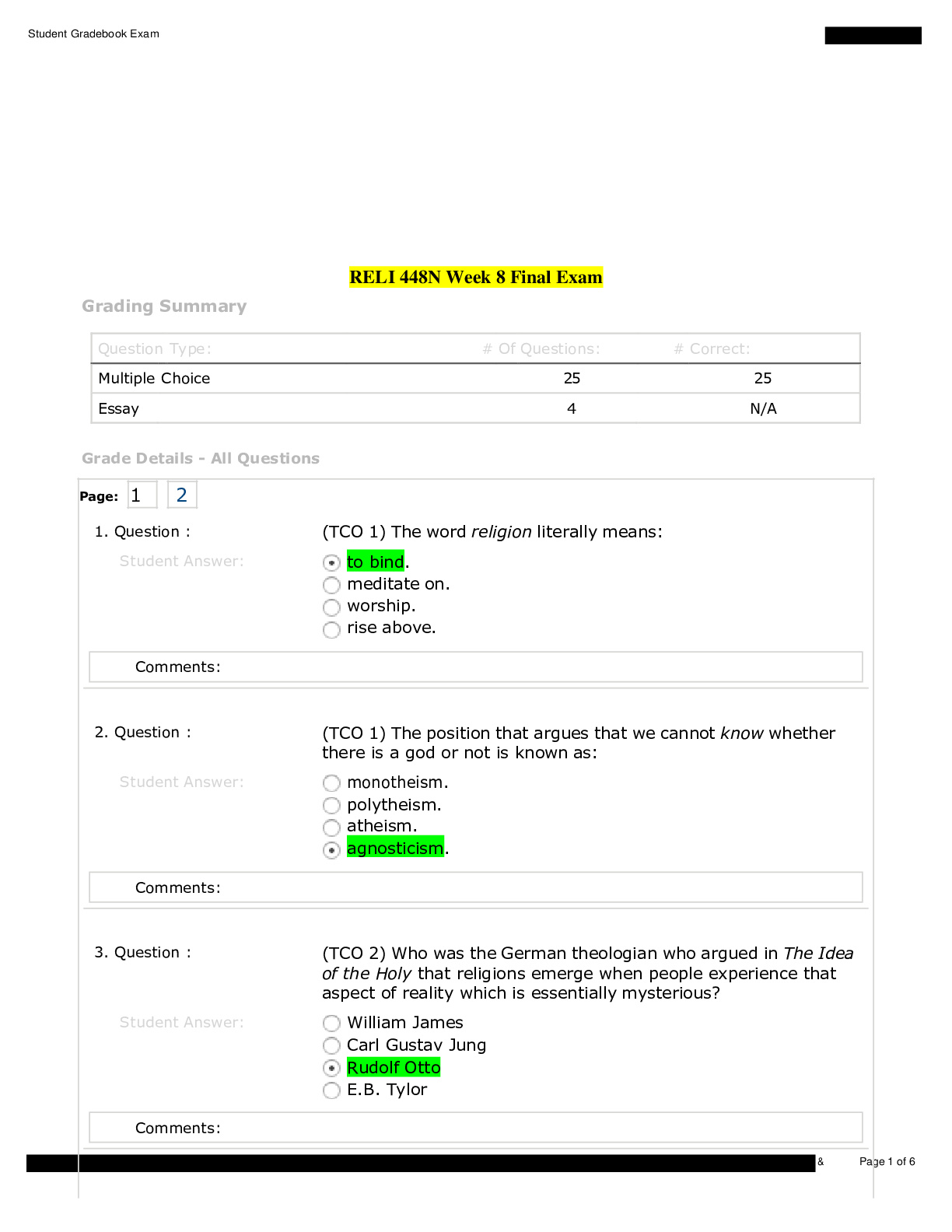
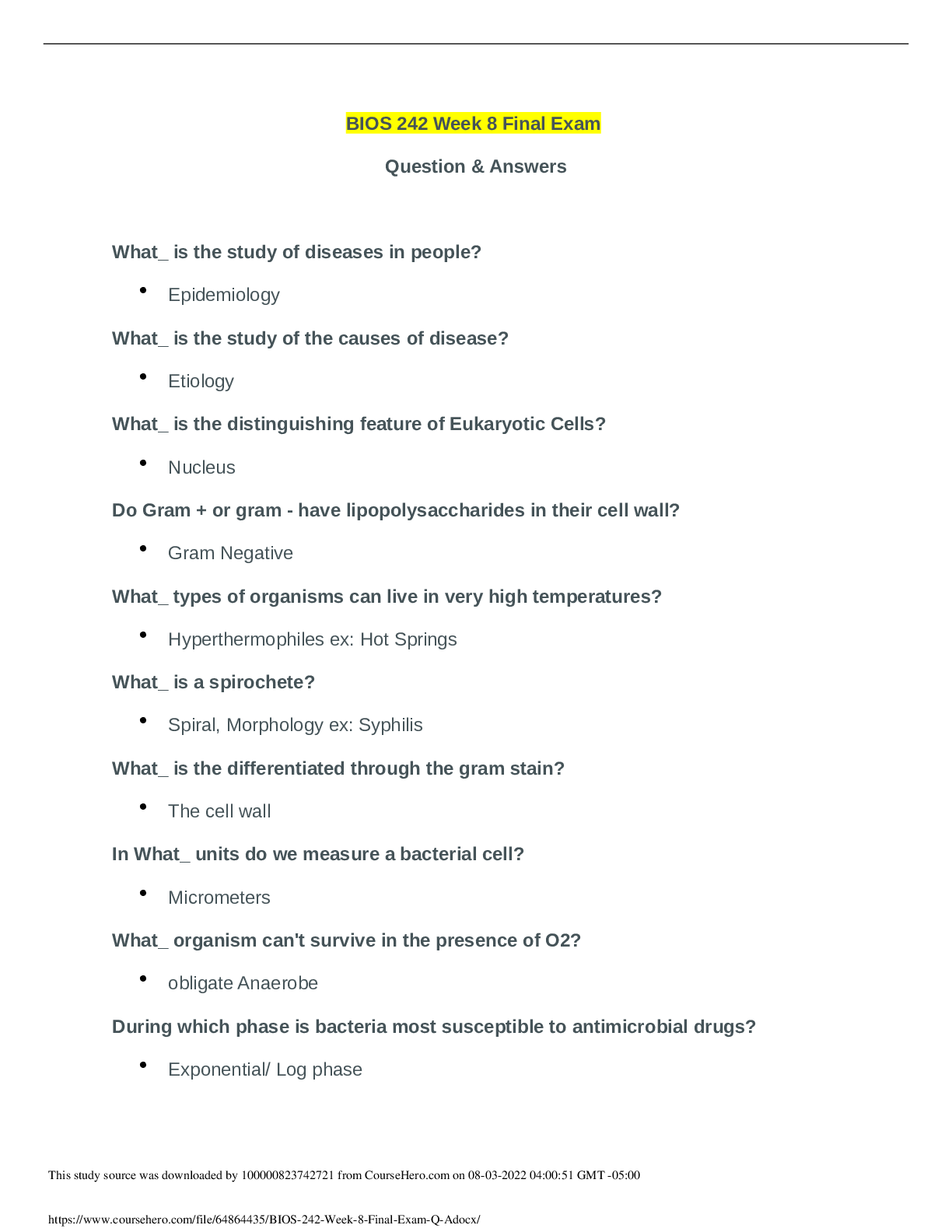
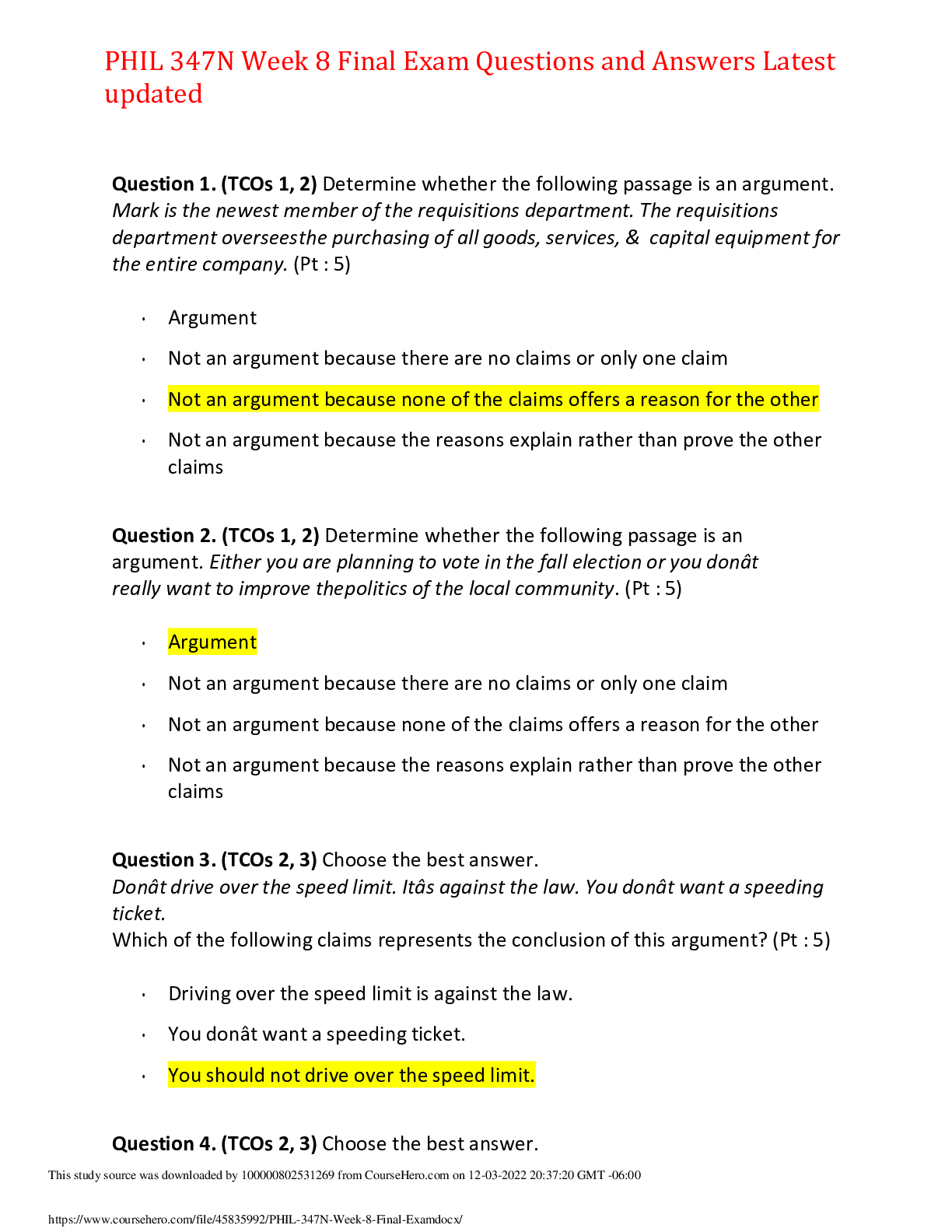
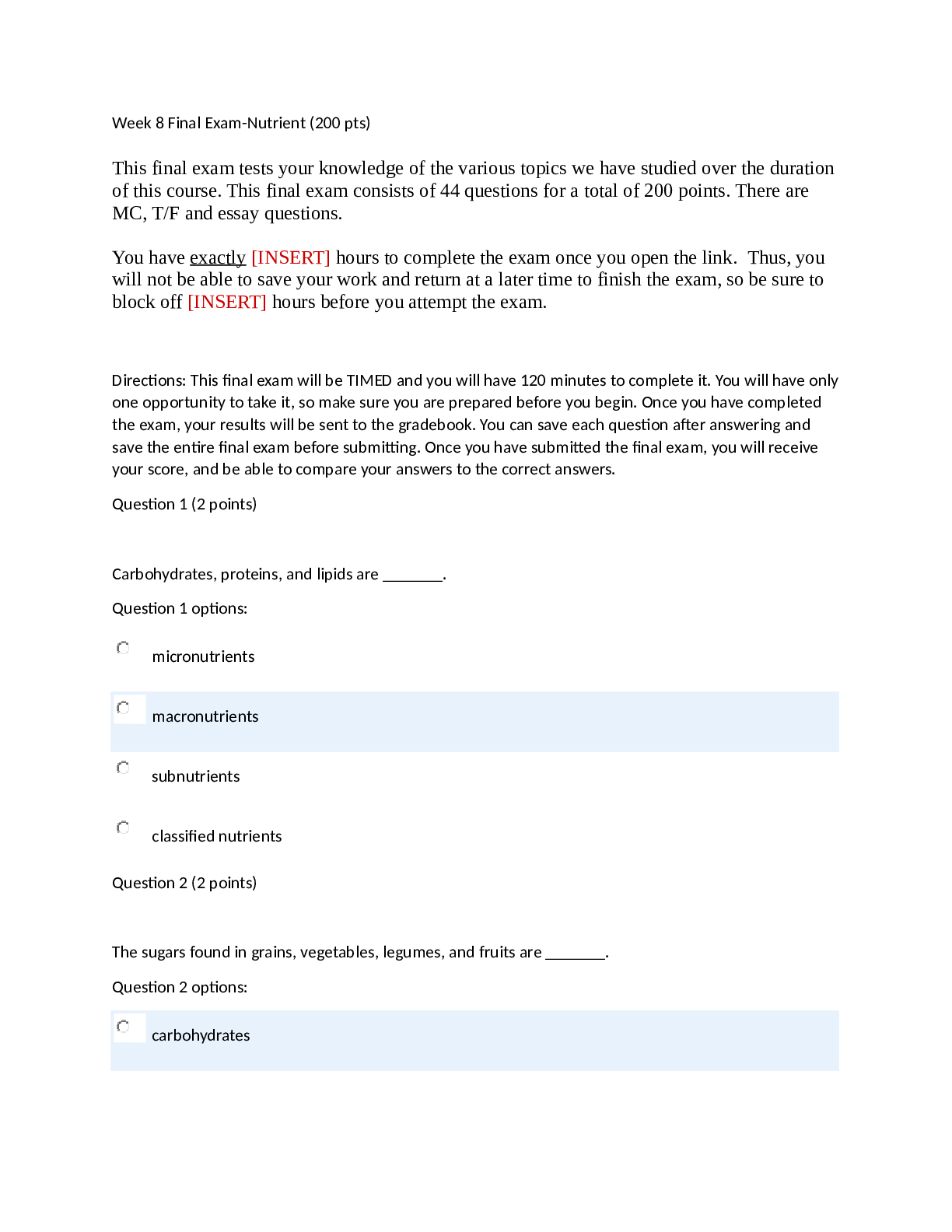
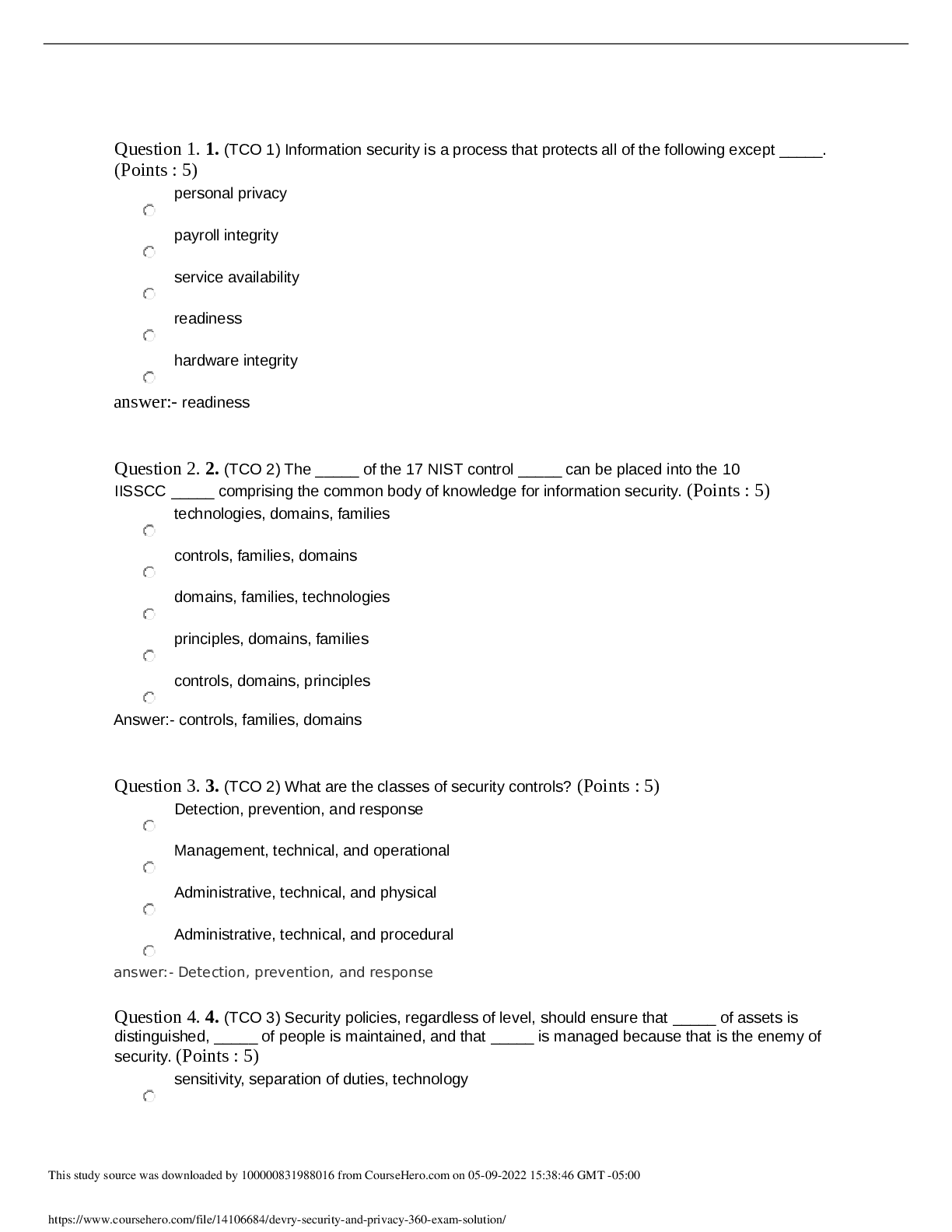

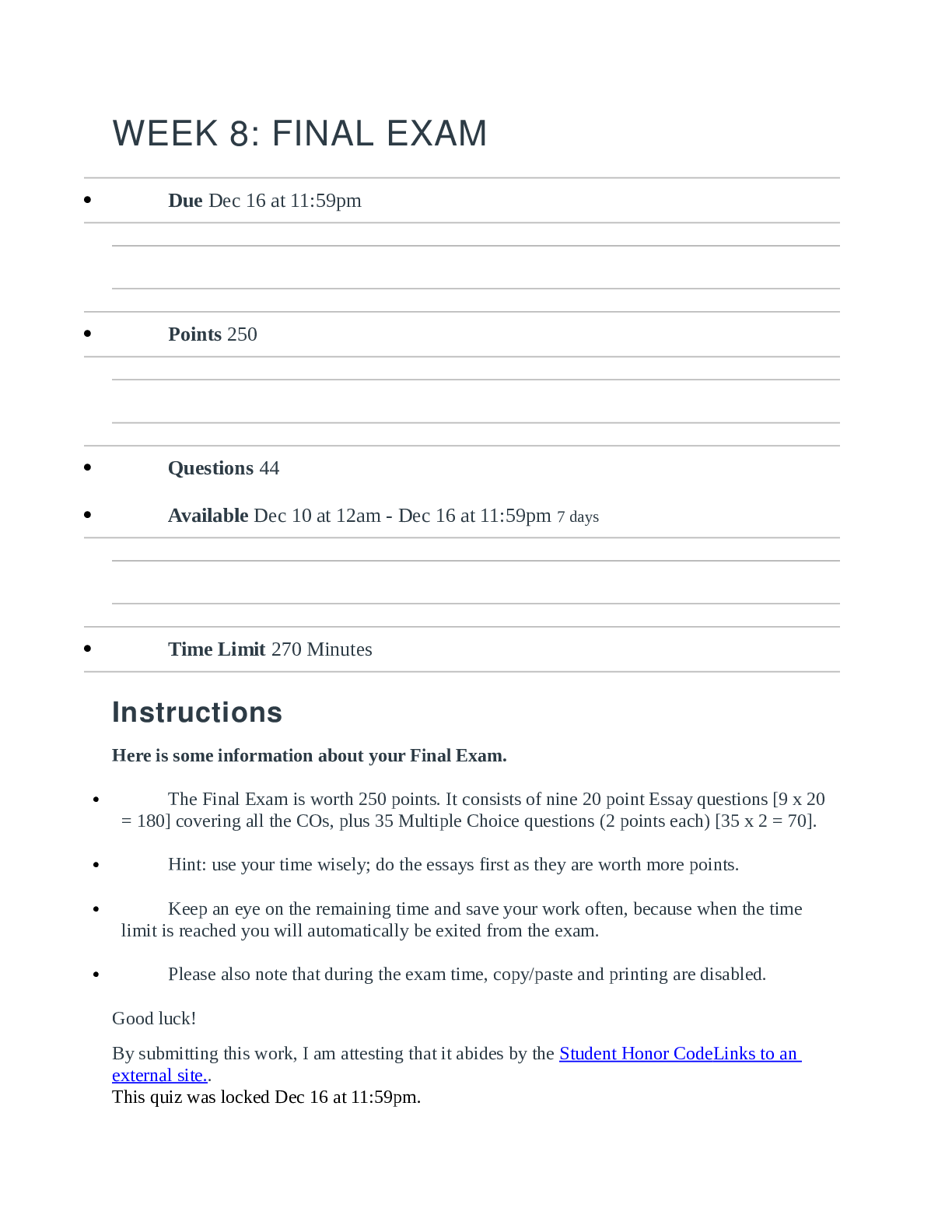
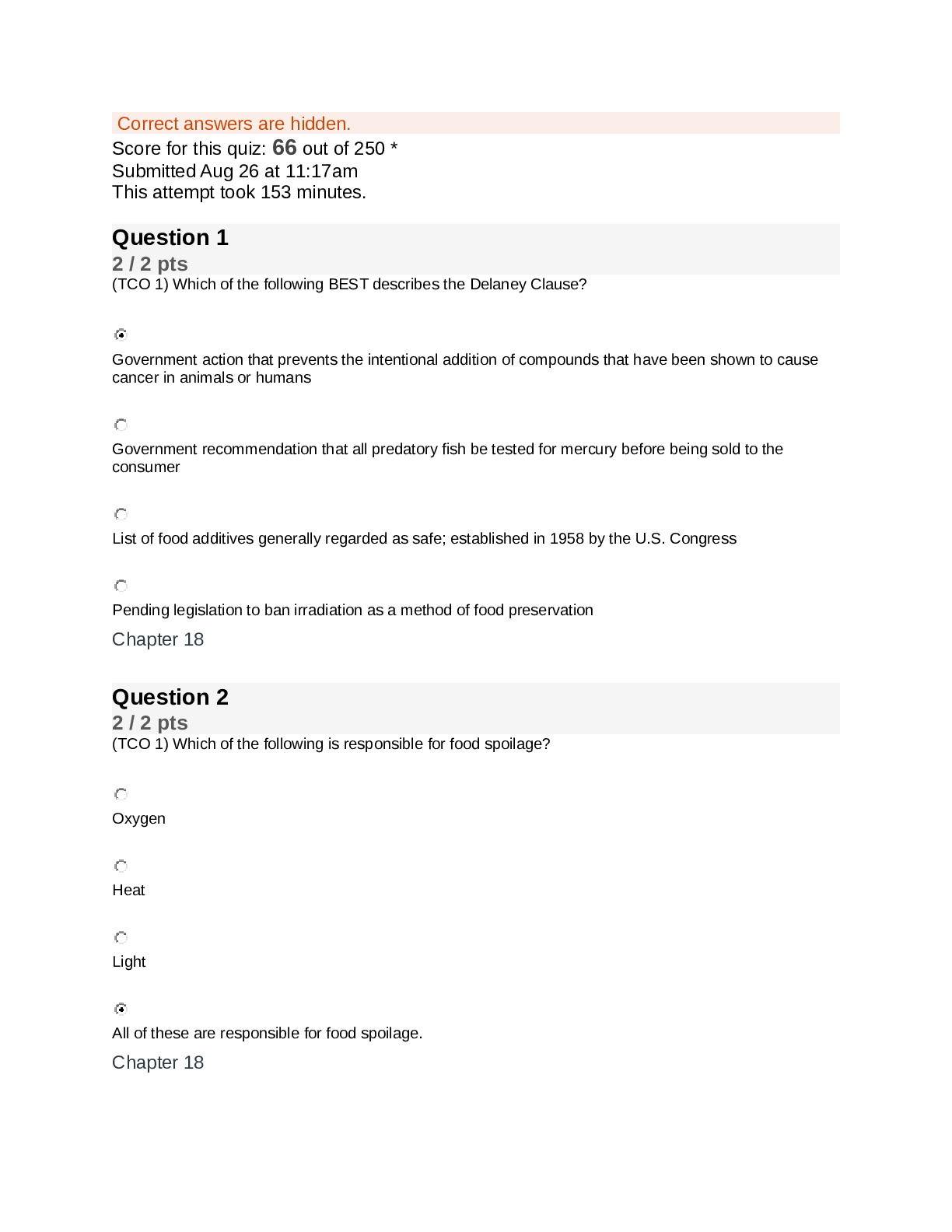
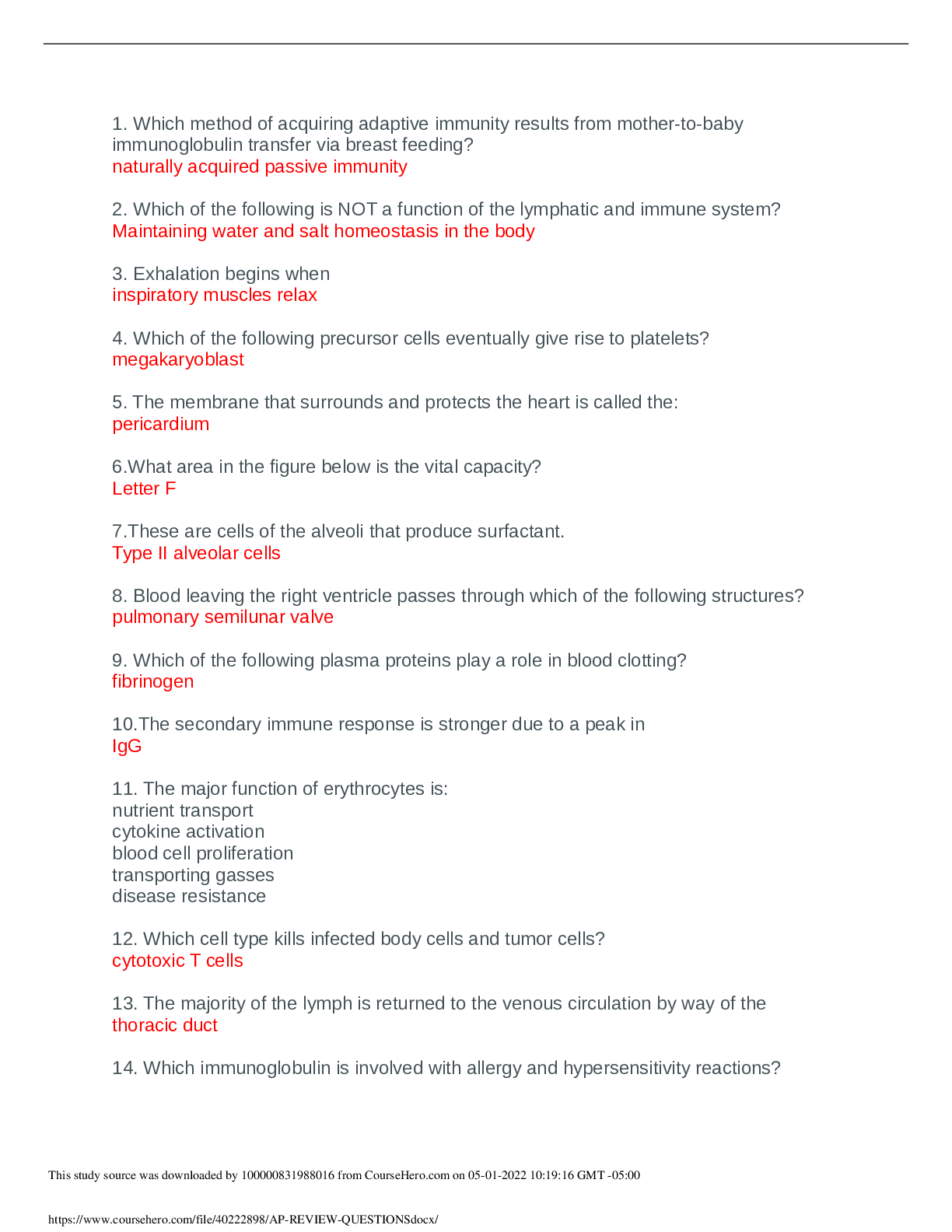

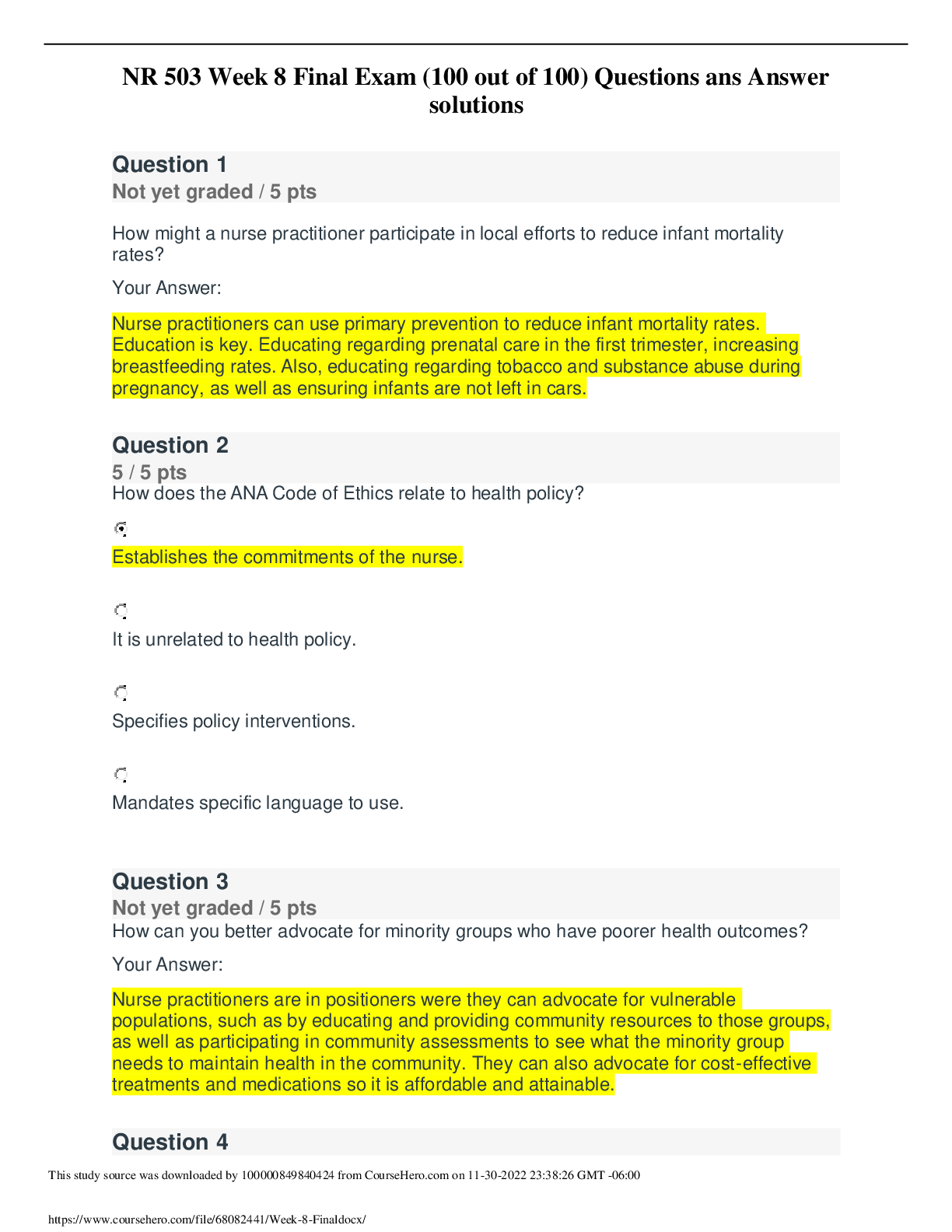
.png)

